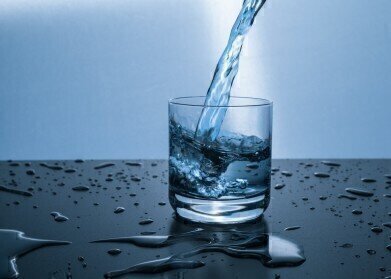Liquid Chromatography
How Can Chromatography Help with Clean Water?
Jul 04 2021
Water is a basic necessity for human life across the globe. But while we might take it for granted as it flows out of the tap, there are numerous countries and communities which still don’t have access to clean water. Read on as we explore chromatography’s role in the journey towards clean, safe water.
The struggle for clean and safe water
With world water shortages on the increase, governments, charities, and the general public everywhere are passionate about getting clean, safe water to everyone that needs it. Scientists worldwide discover new methods of filtering and cleaning drinking water every day, but there is always more that needs to be done.
1 in 10 people worldwide still don’t have access to clean drinking water close to home, but with science making progress every day, there is hope that this will change one day. Many countries have safe water initiatives, such as Malaysia’s Trust Our Tap 2028, which revolves around a holistic approach to ensuring a safe water supply.
The use of an Off-Plant Autonomous Chlorine Injection System (OACIS) helps to address the issue of Free Residual Chlorine (FRC) in the distribution system. Chlorine is added to the water supply as a crucial disinfectant to eliminate pathogenic microorganisms.
Using chromatography to obtain clean water
Chromatography can be utilised in water quality analysis, and it is being used all over the world. At Air Selangor in Malaysia, for example, they use chromatography for maintaining their water standards, based on four main pillars:
- Protecting raw resources
- Quality control and management
- Increasing the lab’s capacity and capability to diagnose
- Preservation and treatment of water quality
Air Selangor uses three central laboratories, employing around 20 chemists and microbiologists within their Water Quality Department. Sampling activities occur regularly at all 34 of Air Selangor’s water treatment plants. They also monitor their distribution lines. On-site testing helps to monitor physical parameters, whilst chemical and microbiological testing occurs at designated laboratory sites.
The water quality analysis labs use three types of advanced analytics instruments:
- Liquid Chromatography Mass Spectroscopy Quadrupole Time of Flight
- Inductively Coupled Plasma Mass Spectrometry
- Gas Chromatography Mass Spectrometry
Researchers can trace and analyse contaminants, trace metals, and potential pollutants, such as pharmaceuticals and solvents, using these instruments. Chromatography highlights the presence of all of these substances, even in barely traceable concentrations. You can find out about improvements to liquid chromatography in the article, ‘Considerations for Sample Injection in High-Throughput Liquid Chromatography’.
Air Selangor ensures the integrity of its test results by using Laboratory Information Management System (LIMS) to improve systematic lab data management. The Air Selangor water company is currently collaborating with Universiti Malaya on a study for the sustainability and resilient water supply at the Rawang River Sub-Basin.
It’s hoped that – with the help of chromatography – projects like these can continue to move towards a world where everyone has access to safe, clean water.
Digital Edition
Chromatography Today - Buyers' Guide 2022
October 2023
In This Edition Modern & Practical Applications - Accelerating ADC Development with Mass Spectrometry - Implementing High-Resolution Ion Mobility into Peptide Mapping Workflows Chromatogr...
View all digital editions
Events
ACS National Meeting - Fall 2024
Aug 18 2024 Denver, CO, USA
Sep 04 2024 Chiba, Tokyo, Japan
Sep 04 2024 University of Warwick, Coventry, UK
Sep 10 2024 Rockville, MD, USA
Plastics Recycling World Expo Europe
Sep 11 2024 Brussels, Belgium













